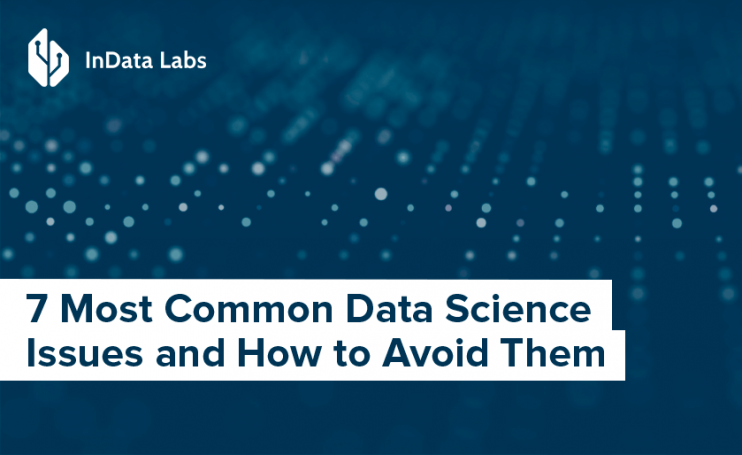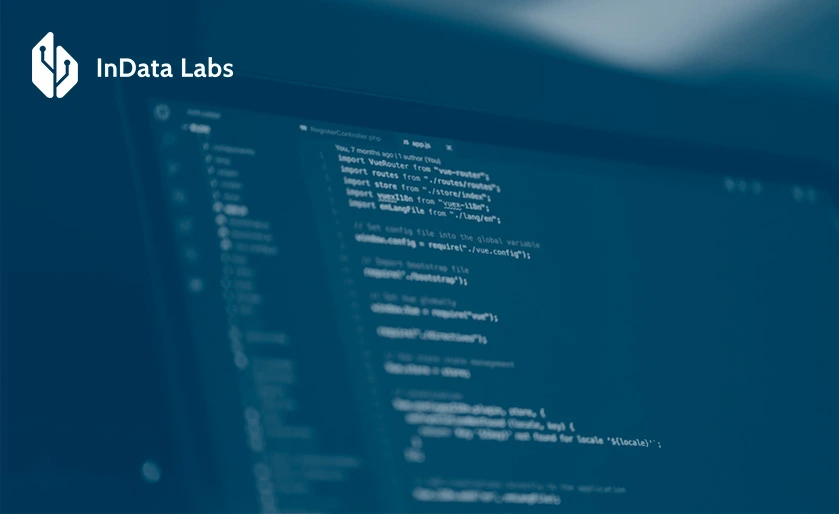Did you know, some of the world’s most significant discoveries were made by mistake? From the famous Slinky toy and microwave ovens to Pacemakers and Penicillin, one famous novelist writes that ‘mistakes are the portal to discovery, and in many cases, he wasn’t wrong.
However, when it comes to the world of AI data science, while its issues could lead to identifying key patterns that would have otherwise been invisible, there’s no denying the margin for error is basically microscopic. Bad practices tend to mean bad results; mistakes that an organisation cannot afford to make.
With this in mind, today we’re going to explore some of the issues of data science, mistakes you can make, and how to avoid them as an engineer.
1. Using the Wrong Visualization Solutions
It doesn’t matter what kind of data you’re working with, if you’re not choosing the right visualization tools for the job, you may end up at the result you’re looking for much slower than before, meaning you’re wasting time, and maybe won’t even find the results you’re trying to find.
Avoid this mistake easily by defining how you want to visualize your data and the goals you’re aiming for at the very first step of your processing operations. This, of course, means familiarizing yourself with available solutions, so you know what will work best and for which process.

Source: Unsplash
2. Not Validating the Right Model Frequently
Another core point to remember is that machine learning services that process data seem to suffer issues with accurate prediction processes due to a kind of decay unless engineers are proactive in making sure the system regularly receives new data and then grading their system to ensure it doesn’t fall beneath a predictable level.
If this isn’t carried out, it can mean you end up with false results with plenty of variables, so validating, grading, and providing new data is key. Whether you do this hourly, daily, or monthly will depend on how fast your model’s relationships are growing and changing. You can also use predictive analytics models to ensure everything is running smoothly.
3. Not Setting a Core Question
Sure, you could get any scientist to analyze all kinds of data until the cows come home, but this is a complete waste of time if you’re not setting a question to answer or a plan to be carried out. All data scientist works need to be organized and work to objectives that are to be fulfilled.
Jumping onto data and trying to figure it all out and find patterns is, of course, exciting for any data scientist, but without clear and concise objectives to meet, it’s all pointless. After all, you may have somewhat of an idea you’re trying to find, but if you keep ending up with results, you don’t actually want, you’re going to be wasting your time.
“The remedy to these data science issues? Set clear goals and objectives. Ask a ‘Why’ question and then follow the path down using your big data to answer this question. This will help to keep you focused and your efforts concise,” shares Peter Taylor, a business blogger at Paper fellows and State of writing.

Source: Unsplash
You can always invest in the help of a data science consultant who would be able to help you identify your core questions and which directions you have the opportunity to take with your intelligent system model.
4. Correlation, Not Causation
One of the most common issues in data science I see is a data scientist mixing up correlation with causation. It’s a costly mistake you need to ensure you’re not making yourself. While most engineers rightly imply causation from correlation when working with big data, you need to remember that this isn’t always the case.
As a rule of thumb, remember that just because two units of data appear to be related to one another, that doesn’t mean that one causes the other. It’s easy to fall into the trap of thinking this, so be mindful.
5. The Probabilities Are Ignored
Another extremely common mistake I see data scientists making. To be clear, if you ignore the possibilities of a solution or processes you’re carrying out, the chances are you’re going to make the wrong decisions. At the very least, you’re going to increase your chances of that happening.
No matter what question you’re answering, there are always going to be multiple possibilities, and each probability is going to have a degree of certainty and uncertainty. Be mindful of this and don’t ignore this fact to ensure you’re capable of making the right decisions and deciding the right outcome.
6. Designing a Model Based on the Wrong Population
“Let’s say you’re looking at customer influence patterns for a client, but you end up only building a model based on highly influential customers. Are you going to get the best or even slightly accurate results? Probably not,” explains Terry Harper, a tech writer at Boomessays and Australian help.
“In this example, you should be looking at customers who are not only highly influential, but also customers who aren’t, but could be influential. When creating populations for your model, always try to brainstorm and cover the less-represented populations that you may not think of straight away.”

Source: Unsplash
7. Only Looking at the Data
Big data is a new frontier for science, but you must remember that it’s not the be-all and end-all of the process. Imagine you’ve got a ton of data coming in from multiple sources. Yes, it’s an exciting time, but remember that if you crunch data for long enough and hard enough, you can really make it say anything.
If your dataset is large enough, you’re going to find correlations of some kind. Just because the data says something, doesn’t mean it’s actually gospel. There’s also a ton of ethical aspects, AI mistakes to consider, and more when it comes to processing this kind of data, and data scientists need to bear this in mind.
When it comes to fulfilling an objective, make sure you’re using data as an influencing factor when making your final decisions or outcomes, not just saying that your outcome is the deciding factor. Be responsible.
Conclusion
These are just some of the most common mistakes that data scientists tend to make at all stages of the data science process. By being aware of these data science mistakes, and most of the time not just get carried away with what you’re doing but by being a lot thoughtful, you can minimize your risk of making mistakes and thus create the best outcome throughout your practices.
Molly Crockett is a successful data scientist and writer for Ukwritings.com and Academized, where she shares her unique insights from inside the industry and helps inspire other data scientists around the world. She also writes for Essayroo.
Start Your Next Breakthrough Project with InData Labs
Have a question? Contact us at info@indatalabs.com. We’ll gladly discuss the opportunities for cooperation.



